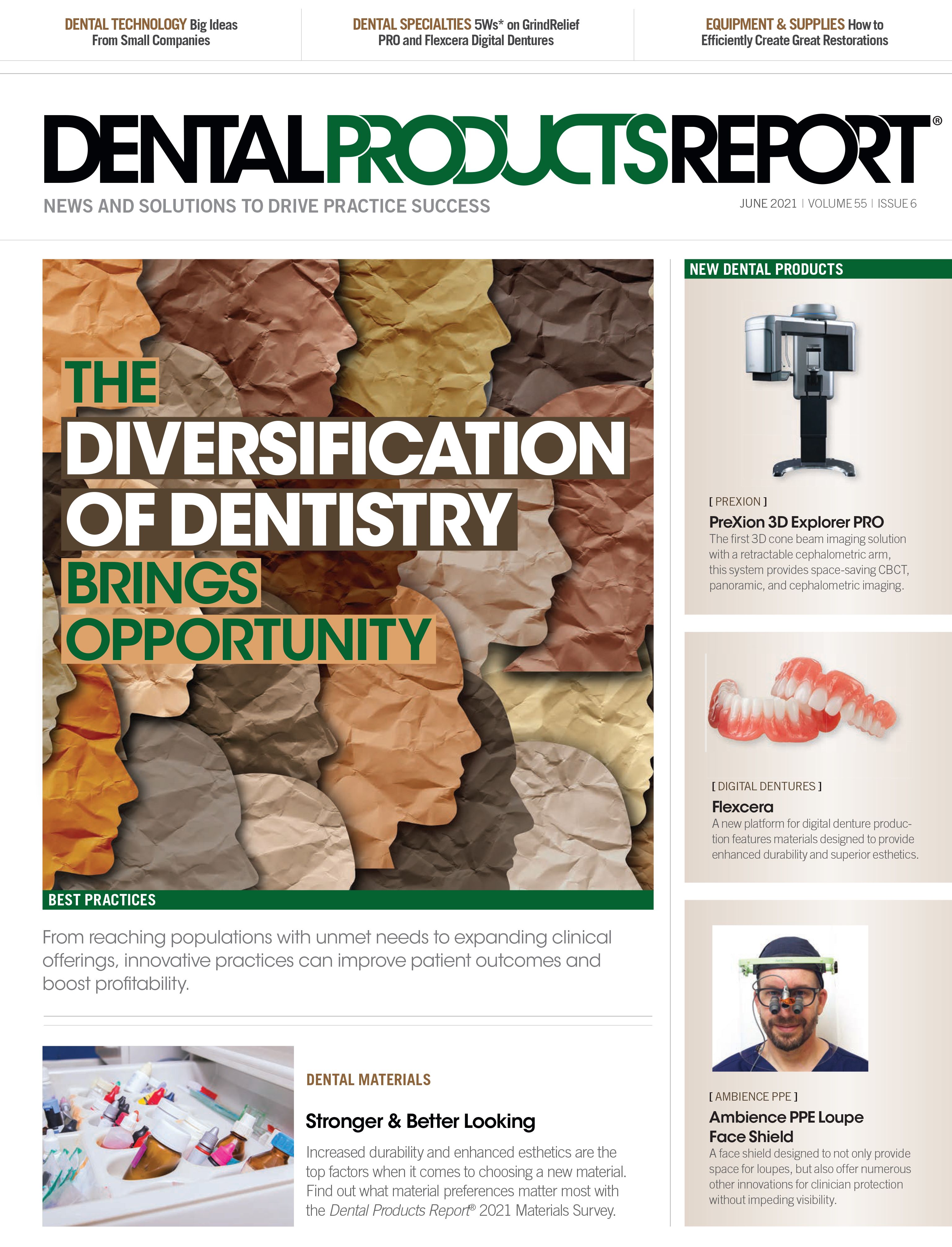True Dental Dams Stand Out From the Crowd
These Clinician’s Choice rubber dams stand out among others due to their versatility, tear resistance, flexibility, and color.
Clinician's Choice

Rubber dams provide isolation to prevent contamination of endodontic and restorative preparations and to protect the oral cavity and throat from materials and equipment used in dental procedures. They prevent the oral cavity and the working field from contaminating one another.
Rubber dams are a standard of care for endodontic procedures. Surprisingly, only 47% of 1490 US dentists who participated in a National Dental Practice-Based Research Network survey reported always using rubber dams during root canals.1 Rubber dams should be used for every root canal to prevent oral bacterial contamination of the root canal system and inadvertent dropping of files into the patient’s throat.
The use of rubber dam isolation for restorative procedures, on the other hand, may not be considered standard of care by all dental practitioners. Another National Dental Practice-Based Research Network study found that 63% of dentists never used rubber dams for restorative procedures.2 Additionally, only 12% of the 9890 restorations observed in the study were performed with rubber dams.3 Despite the relatively low use of rubber dams for restorative procedures in the US, they provide many clinical advantages.
“Using a rubber dam is an essential step when I am performing a direct adhesive restoration,” says Nate Lawson, DMD, PhD, MA, associate professor at UAB School of Dentistry in Birmingham, Alabama, and Division of Biomaterials director. “The main function of a rubber dam for me is to prevent saliva, blood, and crevicular fluid from entering my tooth preparation. Salivary contamination of my bonding agent significantly reduces the bond to dentin to nearly half of its maximum bond.3 Rubber dams can also retract tissue to allow better visualization of the tooth and protect the tissue from laceration from my bur. Finally, the rubber dam acts as a barrier to prevent my instruments or materials from entering my patient’s mouth.”
The True Dental Dam from Clinician’s Choice® is a type of rubber dam that provides benefits for both endodontic and restorative procedures. Its biggest advantage may be its good tear resistance.
“I think the No. 1 advantage of the material is that it’s a good balance between being flexible enough so that you can stretch it over the teeth and floss into contact,” says Dr Lawson. “But it’s not too stretchy such that it can still retract tissues, especially the medium gauge.”
True Dental Dams come in blue latex and purple latex-free options with an opaqueness that visually contrasts with the teeth, making for easier visuals. “Sometimes they make rubber dams that are too translucent so that you can kind of see through the rubber dam, which can be a little bit tricky if you stretch it,” says Dr Lawson. “And it’s translucent and you don’t actually know if the rubber dam is covering up everything that you want it to.”
With the rubber dam’s different gauges, there are a variety of thicknesses that can be used. Medium-gauge dams will be easier to stretch over and floss between teeth, providing the flexibility necessary for certain procedures and mouths. Thicker, heavy-gauge True Dental Dams retract tissue better, pushing it out of the way during the procedure.
“The thing that makes it different is its handling. It’s got a good tear resistance to it, it comes in different materials, latex and latex free, different gauges, and then it also comes in 2 different colors. It’s a little treat. You get to work with a material that’s just made well,” says Dr Lawson. “It’s not a complicated thing, but it does make this process of using a rubber dam a little bit easier and more fun. It sounds weird to say more fun, but it’s more fun.”
